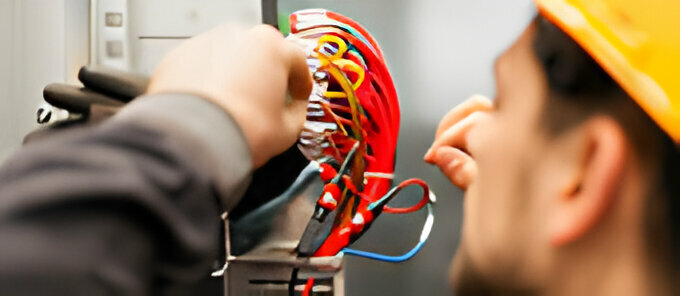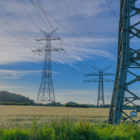Installing data and communication cables properly is necessary. It helps make sure your connections work well in different places. When you use the right techniques, your cables perform great and don’t mess up signals or cause problems. This is a big deal for keeping your network strong and safe from losing or messing up data.
Good techniques also help save money by avoiding fixing badly installed cables. They also make it easy for people to talk and work together on different devices. So, when you focus on doing the setup right, you get a solid network that can handle all the cool tech we use today.
Top 5 Data and Communication Cabling Installation Techniques
Proper Cable Management
Ensuring your cables are organized and labeled well is important for keeping them working great for a long time. When you keep things tidy, you avoid knots and accidents, and it’s easier to fix problems if they come up. Trays, racks, and ties help keep everything neat and in order.
Also, following rules from groups like TIA and ISO ensures your setup works with future changes and upgrades. Good cable management makes things look nice and keeps your network running smoothly, cutting down on time when things aren’t working right.
Cable Testing and Certification
Testing and certifying your cables well is necessary to ensure they work correctly. Technicians use special tools to check how well the cables are working and if there are any problems like weak signals or interference. Doing thorough tests following rules like TIA-568 and ISO/IEC 11801 helps catch any issues early on so you can fix them fast and keep your network running smoothly.
Getting official certification papers shows that your setup is good quality and follows the rules. This gives peace of mind to everyone involved and ensures that everything’s working as it should and meets the standards. So, testing and certifying your cables is a big deal to ensure everything runs smoothly and works well.
Proper Cable Termination
Ensuring cables are connected correctly and securely is necessary for keeping signals strong and avoiding loss in networks. Whether you’re connecting twisted-pair cables with RJ45 connectors or coaxial cables with BNC or F-type connectors, following the instructions and best practices is key. Doing things precisely, like stripping, crimping, and securing connections, helps signals flow well and prevents them from getting messed up.
Using good tools and methods, like cable strippers and testers, makes the job easier and ensures reliable connections. When cables are connected right, there is smooth communication, and your network performs well for a long time.
Cable Routing and Protection
Proper cable routing and protection are crucial to keeping cables safe from physical damage, bad weather, and electrical interference. Figuring out the best paths for cables and avoiding places where they might get hurt, like busy areas or places with sharp stuff, helps prevent them from breaking or not working properly.
Using things like conduits, raceways, and cable trays adds extra protection and keeps things organized, which makes fixing problems easier. Also, using special cables like shielded twisted-pair or fiber-optic ones in places with lots of electrical interference makes sure your signals stay strong and your connections always work well. When you take these steps, your network stays strong and your communication goes smoothly.
Future-Proofing and Scalability
It’s necessary to plan cabling setups with the future in mind to adapt to new needs and upcoming technology. Flexible solutions like structured cabling let you add new devices and services easily without redoing everything. Also, picking good-quality parts means they’ll work with new upgrades, saving you money and hassle.
By thinking ahead and considering things like more data or a bigger network, you can make changes early on to keep everything running smoothly. When you focus on planning for the future and being able to grow, you get more value out of your cabling setup and stay up-to-date with the latest tech trends.
Conclusion
Effective data and communication cabling installation is essential for maintaining efficient and reliable networks. Proper cable management, testing, and termination techniques ensure optimal performance and longevity. Strategic routing and protection measures safeguard against physical damage and interference. By prioritizing these techniques, organizations can maximize the value and longevity of their cabling investments.






Top 5 Cybersecurity Solutions for IT Infrastructure - Welcome to Menara EE Sdn Bhd
[…] stuff in a safe area, and taking action automatically against new threats. Also, they help IT folks figure out what happened during a security problem, stop it from spreading, and fix affected […]